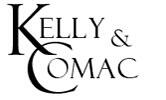NI rates hiked - how much more will workers pay?
Earlier today (7 September) Boris Johnson announced that NI and dividend tax rates will be hiked to help fund social care, pay for coronavirus support measures and clear the NHS backlog. Who will be affected and by how much?

Firstly, NI rates will increase by 1.25% from April 2022. This will apply to both primary and secondary Class 1 contributions, which will increase to 13.25% and 3.25% for earnings up to, and above, the upper earnings limit respectively. Class 4 rates will also increase to 10.25% and 3.25%. The additional 1.25% will be carved out as a separate levy from April 2023 - essentially it will be a new tax.
To illustrate what this will mean for employees, the following table is a useful reference, assuming the current NI thresholds apply:
|
Salary |
Current NI bill |
Expected increased NI bill |
Change |
|
£15,000.00 |
£651.84 |
£719.74 |
£67.90 |
|
£25,000.00 |
£1,851.84 |
£2,044.74 |
£192.90 |
|
£35,000.00 |
£3,051.84 |
£3,369.74 |
£317.90 |
|
£45,000.00 |
£4,251.84 |
£4,694.74 |
£442.90 |
|
£55,000.00 |
£4,951.84 |
£5,519.74 |
£567.90 |
Secondly, the dividend tax rates will also increase by 1.25%, i.e. to 8.75%, 33.75% and 39.35% for basic, higher and additional rate taxpayers respectively.
Related Topics
-
Planning ahead for pension salary sacrifice changes
From 6 April 2029, both employers and employees will be required to pay Class 1 NI on pension contributions in excess of £2,000 made through a salary sacrifice arrangement. What can you do about it?
-
Marginal relief - responding to an HMRC nudge letter
HMRC is running a campaign to clamp down on incorrect claims for corporation tax marginal relief (MR). In what circumstances might you be challenged by HMRC and how should you respond?
-
Can you claim input tax on costs linked to electric cars?
Your business intends to go green and buy new electric cars. Can you claim input tax on the purchase of the vehicles and their subsequent fuel costs? Additionally, what recent change has been announced by HMRC?

 This website uses both its own and third-party cookies to analyze our services and navigation on our website in order to improve its contents (analytical purposes: measure visits and sources of web traffic). The legal basis is the consent of the user, except in the case of basic cookies, which are essential to navigate this website.
This website uses both its own and third-party cookies to analyze our services and navigation on our website in order to improve its contents (analytical purposes: measure visits and sources of web traffic). The legal basis is the consent of the user, except in the case of basic cookies, which are essential to navigate this website.